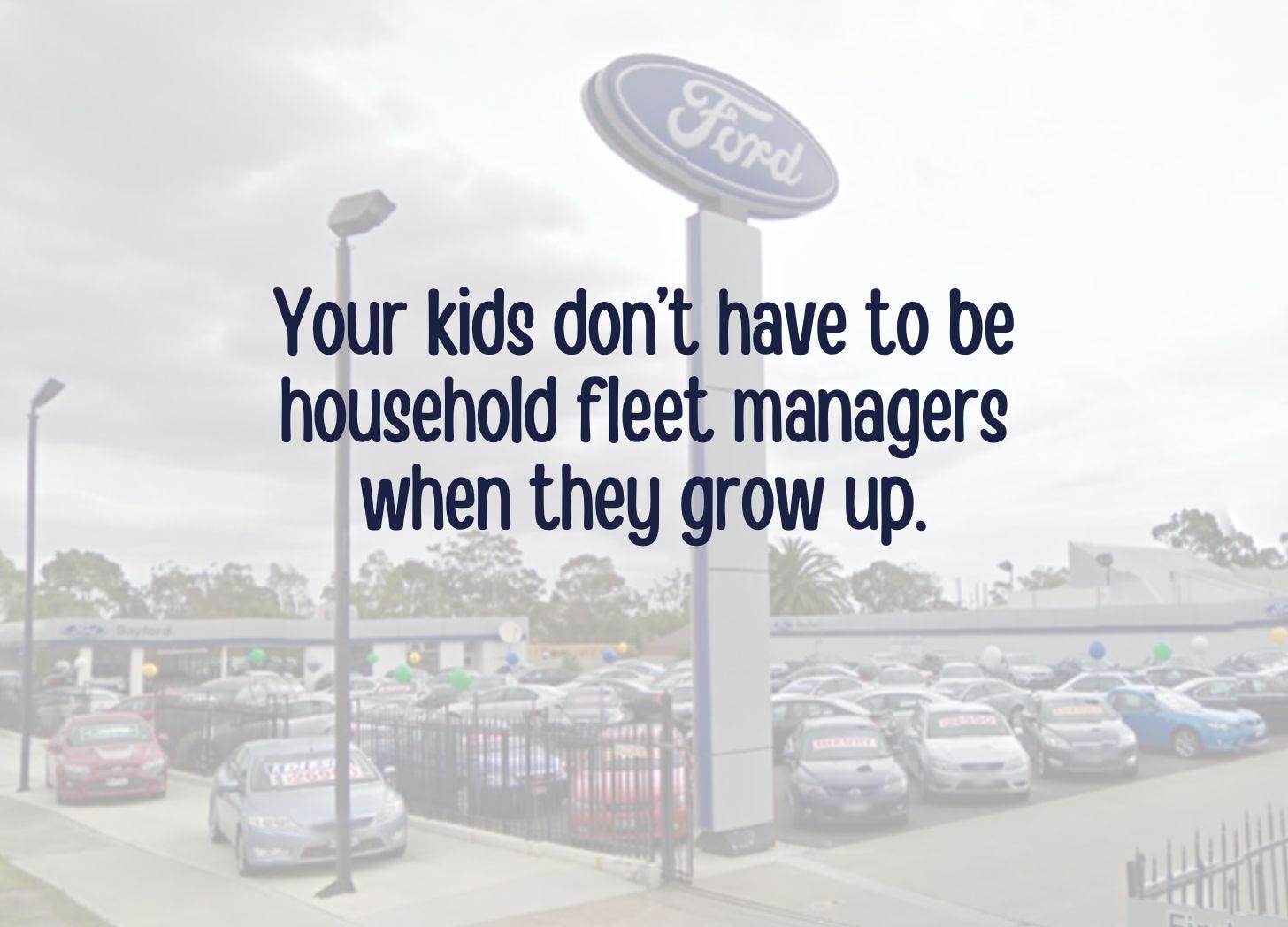College is a great time to experience car-lite living
It's easier to form healthy habits if you start when you're young.
We parents act as if “fleet manager” is an inevitable part of our children’s future.
Personal car ownership promises freedom, but for college students, most trips are short. You might feel like you’re always on the move, but you’re not going very far. Many universities acknowledge this reality and have what’s known as Transportation Demand Management (TDM) strategies. TDM is industry jargon for things you’re already familiar with:
Encouraging carpooling, riding the bus, biking, or walking.
Implementing congestion pricing or parking fees.
Promoting flexible schedules to shift peak travel times.
But at the same time, universities push for road widening, intersection expansions, and parking garages. They publicly lament traffic jams as a chess move to get public agencies to fund more car infrastructure—while they induce even more driving demand by spending millions on car storage. A single car parking space could hold 10 bicycles—a vastly more efficient use of space and resources for a campus.
Forming car-lite habits
Students form lifelong habits in college. Why shouldn’t lots of walking and bike riding be part of their daily routine? If car-lite behavior is normalized early, they’re less likely to default to car ownership later. And when they do come to a point where they need a vehicle, they’re more likely to shop for a car as an expensive tool and not the standard “family fleet” approach. Universities can make help make smarter and healthy choices the default option for students:
Convert on-street car storage into bicycle storage—a simple, low-cost way to incentivize bike trips.
Build covered bike parking near campus buildings—not just in remote lots. Make the entire ground level of a garage dedicated to bicycles.
Invest in safe, connected bike lanes—because bike-friendly infrastructure encourages biking, while car-centric design discourages it.
The human brain isn’t fully developed until around age 25—so why push students into high-powered vehicles when better choices exist? College should be a time to experience the ease and affordability of a car-lite lifestyle, not get locked into car dependency.
The top 10 causes of death in the US can all be reduced by more physical activity. If students graduate accustomed to active transportation, they’ll take those habits into the real world—leading to less congestion, safer streets, and healthier communities. There’s also the very practical financial angle. Owning and operating just one vehicle is a financial burden, let alone buying a vehicle for all the driving-age members of the family.
Talk to professors, administrators, and parents of future students. Challenge them to align university budgets with their sustainability goals. The solution isn’t more parking garages—it’s designing campuses where cars aren’t necessary.



My city and university have been working on securing funding for a $60M pedestrian bridge to endless critiques of the need and cost. Meanwhile, the Board of Trustees approved $375M worth of parking garages to crickets. The different standards never cease to amaze me
Agreed! We are a four-car family (we live 5 miles from the nearest restaurant and grocery store in suburbia). Yet we won’t let our daughter take a car to college, at least not her first year while she lives on campus. She’s not happy about this but we think she needs to experience a year of getting around by foot and public transport. We’d happily provide a bike, too—but despite riding a ton until about age 13 she won’t hug ave anything to do with bikes now :(